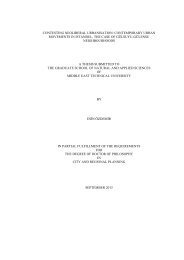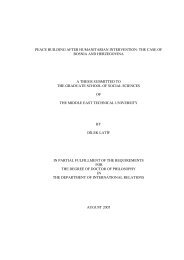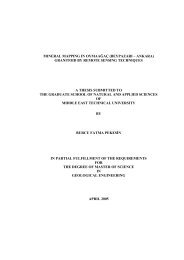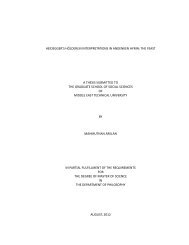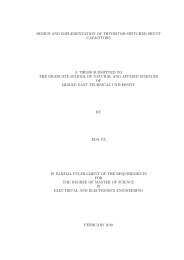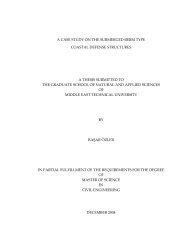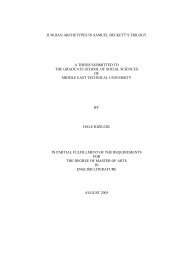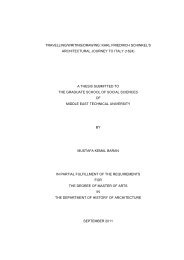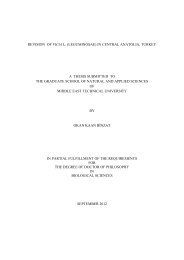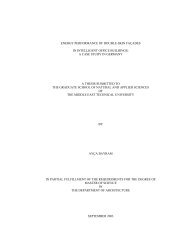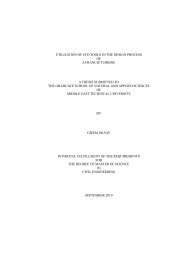View Original - Middle East Technical University
View Original - Middle East Technical University
View Original - Middle East Technical University
Create successful ePaper yourself
Turn your PDF publications into a flip-book with our unique Google optimized e-Paper software.
accumulation’(1991:45-6). Thus the ‘original intention’ had been towards a long-<br />
wave theory of capital accumulation that studies the changes in the network of social<br />
forms as opposed to some unchanging structure of capitalist economies so that<br />
transformations of the structural invariant are not inexplicably tendencial or<br />
ephemeral; the very ‘mode of cohesion’ of the said forms which never stems from<br />
some exogenous variable nor is spontaneous, but in fact is very ‘short-lived’; and<br />
finally, the very ‘capacity for evolution’ or the Sraum for régulation between the<br />
system and its contradictions even in the very midst of a structural crisis. As such<br />
theorists of capitalist régulation must ‘explain how stable capitalist accumulation is<br />
possible over long periods, how and why these long periods end in major economic<br />
crises, and how new stable patterns can emerge’(Noel 1987:305). This tripartite<br />
research has been quite invidious; after all regulation theory has been more<br />
analytically staunch than other ‘theory informed understanding[s] of time-changing<br />
empirical patterns’. Then there is the timing of the regulationist research on Fordism;<br />
Aglietta and CEPREMAP had not considered the circumstances of this unarguably<br />
post-war phenomenon before the 1970s or before its crisis(Lipietz 1987).<br />
As to crisis, the regulationist shibboleth is ‘every society has the economic context<br />
and crisis corresponding to its structure’ which it borrows from the Annales School,<br />
that is, crisis is always the crisis of a certain model of growth, so that ‘it is important<br />
to analyse how the different stages of industrial capitalism affect economic cycles and<br />
major crises’(Boyer 2002:17). For Brenner and Glick, regulationists however have<br />
not even been ‘at one’ as to the exact contradictions of Fordism(1991:96). At one<br />
time, Aglietta argued that both the crisis of the interwar economy and that of Fordism<br />
had its basis in the uneven accumulation in Department I and the stagnant wage<br />
income segment of the overall effective social demand; the nuance however is that the<br />
latter crisis was more about the contradictions of intensive accumulation itself than<br />
certain competitive mechanisms and the terms of working-class consumption that had<br />
been antithetical to an all-out intensive accumulation in the 1920s. Another argument<br />
touched upon the contradictions of productivity growth under Fordism. Productivity<br />
stagnated as Taylorist methods of work and mechanisation were no longer productive;<br />
86



